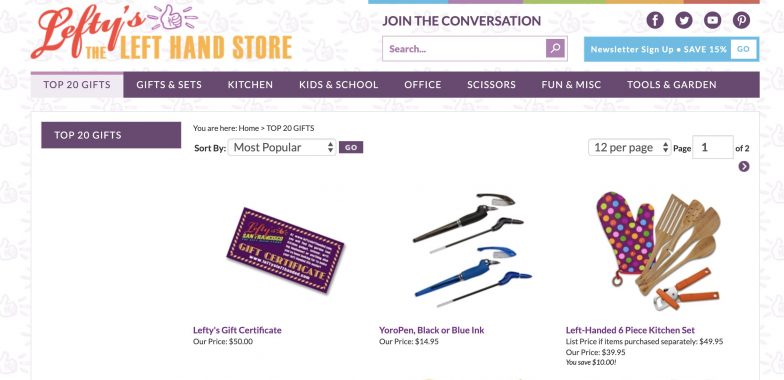The saying “Jack of all trades is a master of none” clearly explains how businesses should not position themselves in the market. When the market is crowded, differentiating yourself from your competitors becomes crucial. But whether the market is niche or saturated, it is essential to set yourself apart from the competition to attract customers.
Finding a business niche is critical, as it allows you to increase customer loyalty by focusing on a smaller or particular segment of the market. While this may seem risky to many, it is a technique that provides businesses with laser-focused strategies to increase revenue and profitability. So if you are an entrepreneur or a strategist looking to find a brand niche for your business, this article will help you.
What is a brand niche, and why is it important?
A niche brand in the market enjoys higher customer loyalty and lower market penetration. Simply put, certain companies choose to find a niche by entailing all their business processes towards a small segment of the prominent market audience. Some famous examples of niche markets are pets, gamers, vegan people, etc.
You may identify a niche if you wish to build a consistent cash stream, attract a devoted clientele, and run a more focused operation. By doing so, you will amass a variety of benefits. From having a steady stand in the competitive market by differentiating yourself to demonstrating expertise in the field, you may garner real-time benefits. But to gain the most out of it, it is important that you follow a process leading toward finding your brand niche.
Steps to define your brand niche
Targeting the customer segment is key in business marketing and brand building. Businesses should consider their offerings in a way that is hard to imitate. There would be a lot of experimentation, so it is important to remember these steps to define your brand niche flawlessly.
Analyze your wants carefully.
Running a business is never easy. It takes a great deal to soar high. Often, you might find yourself losing brains over understanding what you want and how far it is feasible. You must know that your business will test you at the most unexpected times. So it becomes necessary to pick an area that keeps you on your toes with the greatest passion. Because without a passion, serving your audience becomes tiresome. Many businesses tend to choose a niche running behind high profitability. The truth is, it might not help after a while. And as they say, one might lose interest in what never interested them. Hence, it is essential to analyze your interests and passion.
Identify and understand your customer base.
Upon identifying your interests and knowing where they lie, you must start understanding where the customer base lies. To determine this, you must know the nook and cranny of the whole market. Another way to find your niche segment is by looking into the market audience and identifying untapped segments. This way, your brand has an opportunity to address the pain point of a set group of customers.
You should carefully understand and analyze your customer segment, from their basic demographic information to behavioral patterns. Each sub-segment in your customer base might have different pain points. You must gather these and work towards solving them collectively. You are more prepared for the competition if you know your customers better. Here’s a unique niche that a brand found:

Lefty’s San Francisco is a store specializing in products exclusively for left-handers. They offer a select range of kitchen supplies, office supplies, school supplies, tools, gifts, and toys. Clearly, the pain point of this segment was the unavailability of products for left-handers, and this brand has ingeniously addressed it.
Perform competitor analysis.
Competition is not always a thing of terror. While great competition might feel like you’re at the right place, little competition shows the vast potential for business opportunities. Despite picking a unique niche segment, many brands have failed to succeed because they lack sight of their competition. To step into the sea without knowing its depths is too dangerous for businesses. Hence, conducting detailed and lucid research on your competitors, what they offer and what they do not offer, becomes very critical.
So here’s what you can do. Create a tracker of all your competitors’ websites and platforms. Analyze their approach toward the niche, whether direct or indirect, product-based or service-based, their pricing strategy, their Unique Selling Propositions (USPs), and a complete SWOT analysis. Here’s what the SWOT framework looks like:

Analyze the profitability of the idea.
Needless to say, creating a business plan is vital to every business. It lets you go with a schedule, keep tabs on costs and monitor errors without regretting hindsight. Apart from the regular business plan, you should keep tabs on information about your customer base, every detail of their interests, and the profitability of your niche.
Although a business’s profits may not seem important initially, they are essential for its long-term viability. Finding a unique niche segment and the ability to scale the business model is vital. Hence owning a profitable brand niche becomes very important. For this, you must carefully carve out a pricing strategy that fits your brand’s and audience’s needs without compromising your profits.
Test your idea.
Now that you have all that you need, what’s left is only to test the idea. It might involve the efforts of different teams, who shall work to test the idea and identify the right market fit. You can also try setting up a basic mockup website and take pre-orders for your products or services.
If you don’t find the expected traction, you might want to rework different aspects of your offerings. You can either try altering your positioning, focusing on another pain point of the audience, or choosing a completely different target audience. But zero leads could also mean that the marketing went wrong. You must remember that marketing is the backbone of today’s businesses. Choosing the right medium of messaging and marketing to your niche is vital to understanding your initial success.
In a nutshell…
Today’s businesses have the opportunity to concentrate on a specific market area rather than provide services to large segments. Finding the right niche for your brand is quite a demanding process. But after researching the market, your company’s capabilities, and resources, you may reduce your alternatives and choose the course of action that best fits you, thereby carving out a decent brand niche.






